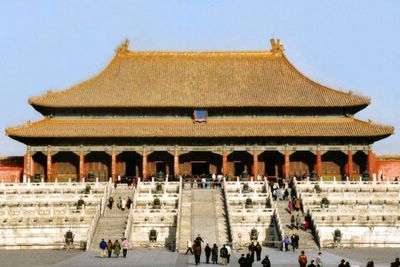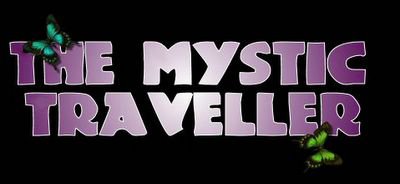The Forbidden City - Palace Of China's Emperors

The Forbidden City
Photography By El-Branden Brazil
In the heart of Beijing, the massive walls and moats of the Forbidden City dominate. Construction of this magnificent palace was started during the Yongle reign of the third emperor of the Ming dynasty. After its completion in 1420, it became home to hundreds of courtesans, eunuchs and concubines, as well as the emperor. Only those of privilege were permitted to enter, whilst commoners were banished.
Covering 2,350,000 square feet, and containing over 9,000 rooms, the palace took fourteen years to complete. A million workers and 100,000 artisans contributed to the project. The layout of the city is based upon Chinese cosmology, and is accurately aligned with the north, south, east and west.
In this secluded, confined world, the emperors ruled with absolute power, either manipulated by or defying the political games of courtesans.
The Chinese call it the Purple Forbidden City. The colour purple is symbolic of the Emperor of Heaven, who, according to Chinese mythology, is located near the North Star. The colour was therefore symbolically applied upon the earthly emperor; although purple is scantly to be found in the city itself. Yellow dominates, because this was the official royal colour.

The Gate Of Supreme Harmony
Photography By El-Branden Brazil
For five centuries, twenty-four emperors resided in the palace until 1924, when the last emperor, Pu Yi, was removed from power by republican troops under Chiang Kai-shek. It later became The Forbidden City Museum, allowing for the first time the commoner a glimpse into what had once been sacrosanct and mysterious.
Nothing can prepare today’s visitors for the splendour that manifests after passing through the main Meridian Gate. Stretching out in front, is the largest open square to be found anywhere in the palace. Here, the guards of honour would line-up during major ceremonies, as the emperor presided from the impressive Gate of Supreme Harmony, located directly across the square from the Meridian Gate.
Passing through the Gate of Supreme Harmony, the visitor now finds himself or herself in the inner sanctum of the palace. In the Hall of Celestial Purity, the emperor would conduct the affairs of government on a daily basis. In these three opulent chambers all political decisions were made.

A Dragon On The Stairway To The Gate of Supreme Harmony
Photography By El-Branden Brazil
Adorning all the buildings throughout the complex is an array of sculpted animals, both mythological and real, such as phoenixes, monkeys, lions and dragons. The dragon was a particularly important beast for the ancient Chinese, and was seen as a celestial, benevolent creature of wisdom and good fortune. With their twisting snake-like bodies, reptilian feet and horned lion-like faces they make for intriguing and beautiful designs.
As with the Great Wall of China, The Forbidden City captures the sense of scale that has always dominated the Chinese mindset. Like other large countries, China exudes a confidence in manifesting big projects, big ideas and big structures. The scope of the Chinese is shaped by the vastness of the land they occupy, as well as their long contribution to the history of world civilization; time and space are their allies.
Covering 2,350,000 square feet, and containing over 9,000 rooms, the palace took fourteen years to complete. A million workers and 100,000 artisans contributed to the project. The layout of the city is based upon Chinese cosmology, and is accurately aligned with the north, south, east and west.
In this secluded, confined world, the emperors ruled with absolute power, either manipulated by or defying the political games of courtesans.
The Chinese call it the Purple Forbidden City. The colour purple is symbolic of the Emperor of Heaven, who, according to Chinese mythology, is located near the North Star. The colour was therefore symbolically applied upon the earthly emperor; although purple is scantly to be found in the city itself. Yellow dominates, because this was the official royal colour.

The Gate Of Supreme Harmony
Photography By El-Branden Brazil
For five centuries, twenty-four emperors resided in the palace until 1924, when the last emperor, Pu Yi, was removed from power by republican troops under Chiang Kai-shek. It later became The Forbidden City Museum, allowing for the first time the commoner a glimpse into what had once been sacrosanct and mysterious.
Nothing can prepare today’s visitors for the splendour that manifests after passing through the main Meridian Gate. Stretching out in front, is the largest open square to be found anywhere in the palace. Here, the guards of honour would line-up during major ceremonies, as the emperor presided from the impressive Gate of Supreme Harmony, located directly across the square from the Meridian Gate.
Passing through the Gate of Supreme Harmony, the visitor now finds himself or herself in the inner sanctum of the palace. In the Hall of Celestial Purity, the emperor would conduct the affairs of government on a daily basis. In these three opulent chambers all political decisions were made.

A Dragon On The Stairway To The Gate of Supreme Harmony
Photography By El-Branden Brazil
Adorning all the buildings throughout the complex is an array of sculpted animals, both mythological and real, such as phoenixes, monkeys, lions and dragons. The dragon was a particularly important beast for the ancient Chinese, and was seen as a celestial, benevolent creature of wisdom and good fortune. With their twisting snake-like bodies, reptilian feet and horned lion-like faces they make for intriguing and beautiful designs.
As with the Great Wall of China, The Forbidden City captures the sense of scale that has always dominated the Chinese mindset. Like other large countries, China exudes a confidence in manifesting big projects, big ideas and big structures. The scope of the Chinese is shaped by the vastness of the land they occupy, as well as their long contribution to the history of world civilization; time and space are their allies.



2 comments:
Your photographs are just wonderful!
Thank you, both. There are a lot more to come.
Post a Comment